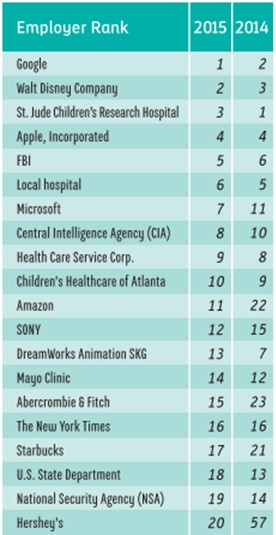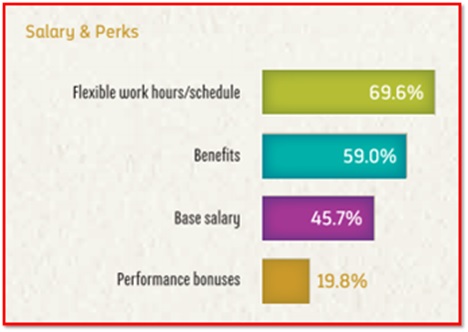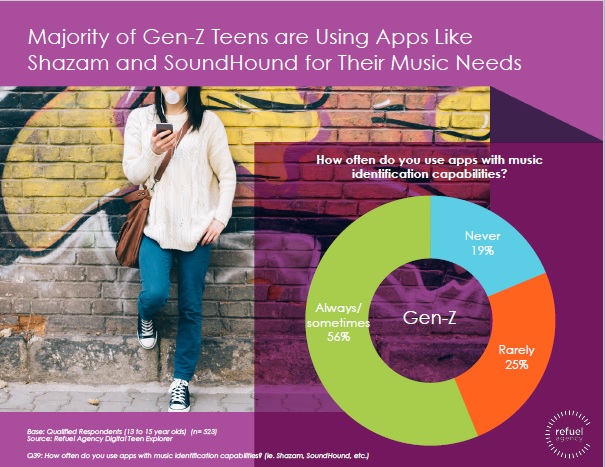It seems as though every industry is now waking up to the demographic realities and cultural challenges posed by Millennials. There are now more articles, doctoral theses, and research studies devoted to this generation than aging Boomers or lost-in-the-middle Gen Xers. The New York Times notes that by 2020, Millennials will make up half the workforce. That’s less than four years from today.
Exactly five years ago, Paul initiated a very successful research effort, primarily designed to help Jacobs Media’s Alternative and Mainstream Rock clients maximize their ratings. “Marketing To Men” was all about helping sellers make the case that guys make many shopping decisions, especially the large group of men who are single and/or live alone.
In recent weeks, Paul has been asked to review this study to ascertain its relevance. And by all accounts, the conclusion seems to be that a “Marketing To Millennials” version might be more apropos and useful at this point in time. Generation Y now outnumbers Boomers in terms of overall population size, a reality that marketers around the globe are grappling with, including public radio programmers who wisely view Generation Y radio listeners as future listeners, reachable through digital pathways from streams to podcasts.
In a few corners of the radio industry, the Millennial challenge has been met head on. Around the time Entercom’s KNDD/Seattle rebooted the station, doubling down on Gen Y, they hired Sean Pollock. Billed as their Millennial Marketing Specialist, Pollock is a great resource who helps The End’s clients better understand how to reach, talk to, and market this generation of listeners in a metro area where they have created a unique culture. And that means business opportunities, now and for the future.
It comes down to developing a true understanding of the Millennial mindset. Some of the biggest differences between this generation and their parents revolves around values and priorities. If you’re a Millennial or you’re the parent of one, you know their attitudes about jobs, the workplace, and debt have been indelibly impacted by the 2008 economic crash, and the reverberations in the at-work environment that have occurred since. Student loans, long internships, mediocre pay, and a rugged path to advancement are all part of the realities many twentysomethings have had to face these past few years.
The National Society of High School Scholars conducts an annual study about the most desirable employers among high school and college students, as well as young professionals. This research has its skew – the 18,000 respondents are either in college, headed to college, or have graduated. They are very ethnically diverse, and three-fourths are female.
But it’s a fascinating window on career choices and brands that have the most appeal to this up-and-coming generation of young people. Working from a list of 200 companies (including Fortune‘s “100 Best Companies to Work For”), here’s their Top 20, along with the comparative rankings from the previous year:
These are obviously bright, young achievers, but it’s fascinating to see the emphasis on tech (not a surprise), health care (maybe not what you thought), as well as security and government agencies (probably an eyebrow raiser, too).
It’s amazing to see how the FBI, CIA, State Department, and the NSA rank. Clearly, terrorist attacks and cyber-security breaches figure into what these rankers are showing us, as well as the movie and television industries that continually focus on law enforcement and anti-terror units.
It’s also telling that media outlets are few and far between, aside from Disney and The New York Times. Again, brands from iHeartMedia to NPR were not on the list of choices and could only be written in.
The study is an open book on how these high-achieving young people envision their futures. And to emphasize the unique challenge of connecting with Millennials, here’s what’s important to them in the way of job perks and incentives – a sobering look at how their priorities may be quite a bit different from the people sitting across the desk:
When flexible hours and benefits trump salary and bonuses, you have to believe you’re dealing with a different type of employee…and person. Chances are good you’ll be interviewing a whole lot more Millennials in the coming months and years, so having a better understanding of the thought process is an important first step.
 Are radio broadcasting companies ready to truly speak to the next generation of U.S. workers? Bernie Sanders most certainly is. While his campaign is challenged by the Hillary Clinton machine, Sanders’ ability to connect with Millennials suggests that understanding and empathy are key ingredients that go into motivating this generation to take action, organize, and even donate to his campaign.
Are radio broadcasting companies ready to truly speak to the next generation of U.S. workers? Bernie Sanders most certainly is. While his campaign is challenged by the Hillary Clinton machine, Sanders’ ability to connect with Millennials suggests that understanding and empathy are key ingredients that go into motivating this generation to take action, organize, and even donate to his campaign.
In just the month of February, Sanders raised $42 million. And you know that Generation Y contributors played a role in this incredible display of support and loyalty.
His success underscores that it’s not about packaging, fashion, or a youthful appearance. Millennial Americans’ love affair with Bernie is proof positive that even the least likely candidate can succeed among this generation of young voters.
And don’t look now because the little brothers and sisters of these pesky twentysomethings – Generation Z – are on deck, and they look quite a bit different from the Millennials who have everyone wringing their hands to try to reach them.
Not surprisingly, Generation Z is still very much a work in progress. Their reality is 9/11-forward, a world in which social media, smartphones, and tablets are as ubiquitous as microwave ovens, DVRs, and fax machines were to older generations.
Gen Z – defined as 13-15 year-olds – is even more tech savvy and connected than those in their late teens. A new study by Refuel Agency, specialists in “niche and youth marketing across the teen, college, military, multicultural and local markets,” shows their behavior differs from Millennial teens (16-19 year-olds) in many ways.
Refuel conducted online interviews last spring with more than 1,200 teens, of whom more than 40% fell into this Gen Z teen grouping. They are especially concerned about privacy and security when web browsing – a feeling that may be amping up during this FBI/Apple standoff.
They are also more predisposed to mobile apps, especially music and photo apps. And they are likelier to use app tools like Shazam and Soundhound to identify the music they hear.
Just when the radio industry was beginning to recognize the dynamics of Millennials, here comes their younger brothers and sisters. Fewer than 100 of them filled out this year’s Techsurvey, more proof that radio has a tough road ahead when it comes to reaching them, as well as convincing them that a career in radio is a smart path.
For the future of the traditional media business, it is paramount to have strategies in place that not only can appeal to the ears of younger consumers, but also attract them to the workforces of big and small broadcasting companies alike.
Have you talked to a 13 year-old lately?
- Why “Dance With Those Who Brung You” Should Be Radio’s Operating Philosophy In 2025 - April 29, 2025
- The Exponential Value of Nurturing Radio Superfans - April 28, 2025
- What To Do If Your Radio Station Goes Through A Midlife Crisis - April 25, 2025








Leave a Reply